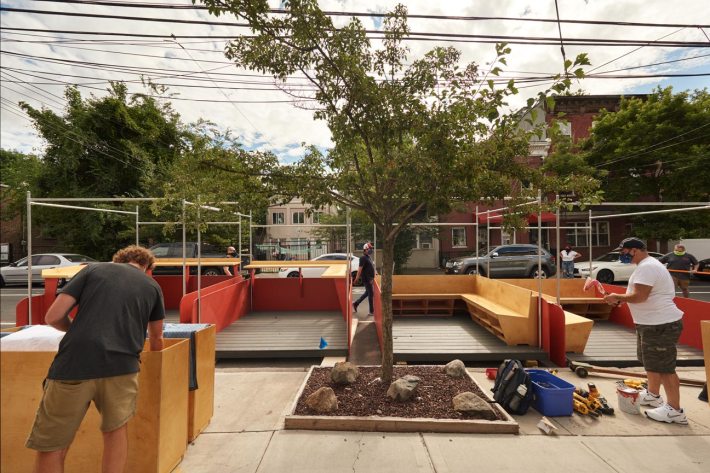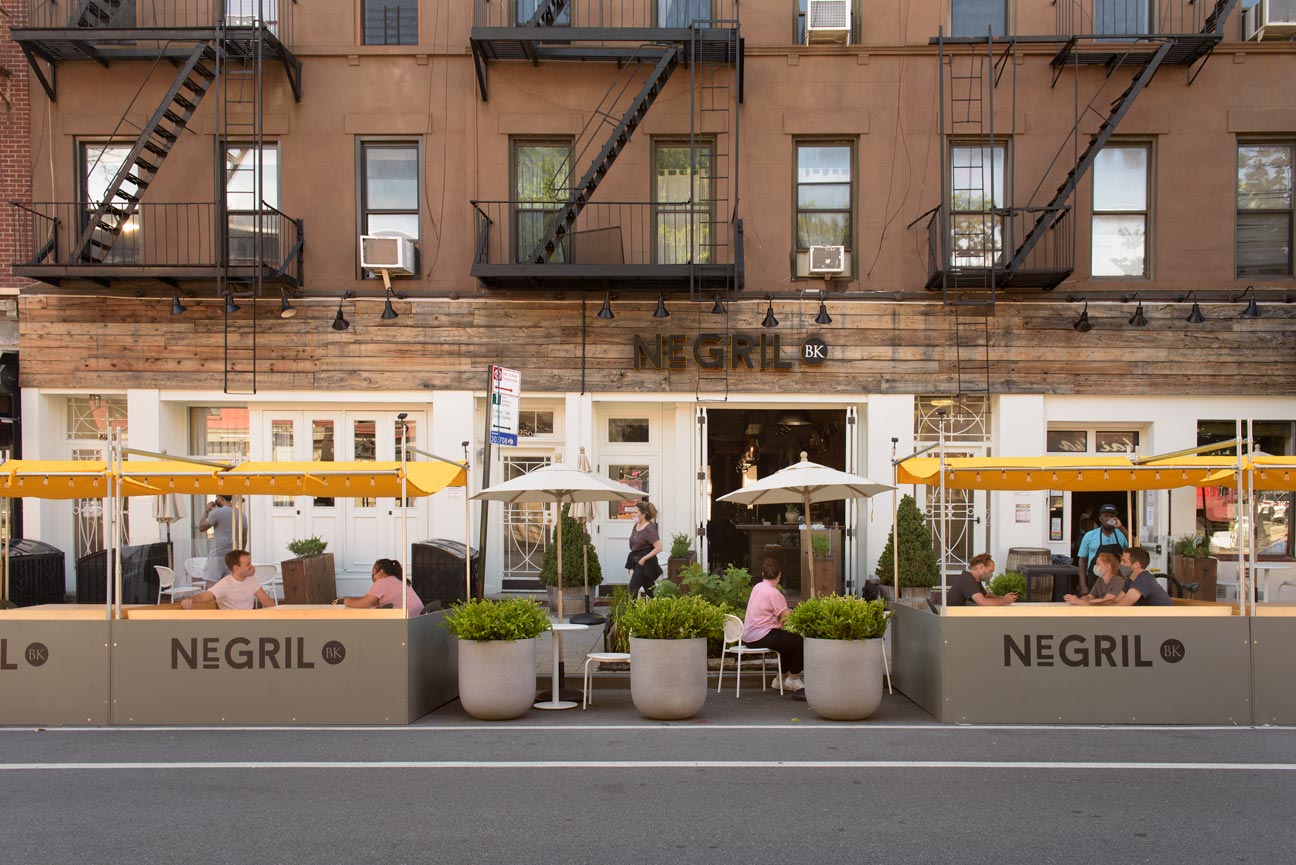It's a start.
Mayor de Blasio announced far more open streets for restaurants than he initially had promised, revealing that restaurants will be allowed to operate in the roadway of 22 streets starting this weekend — more than the 10-20 roads he had promised last week, when indoor dining still seemed likely to reopen.
"We have two initiatives that have been tremendously successful," the mayor said, touting his existing open streets program to turn roadways into public recreation space, and his open restaurants plan which is currently allowing close to 7,000 restaurants to use sidewalk and curbside space for dining. "Now we have to double down ... and give maximum options to our restaurants. And we also know that people want it."
The 22 streets, or 2.6 miles of restaurant piazzas, will be:
- The Bronx
- Arthur Avenue, the main drag of the borough's Little Italy, from E. 188th Street to Crescent Avenue.
- Brooklyn
- Fifth Avenue in Park Slope, from Dean Street to Park Place, an area dominated by restaurants and bars.
- Reed Street* in Red Hook, which is off the main drag of Van Brunt Street and home to Hometown BBQ.
- Dock, Main, Washington streets, plus Anchorage Place, in DUMBO (editor's note: a small cul-de-sac area that should be car-free anyway).
- Manhattan
- Doyers Street* in Chinatown, which saw very little car traffic even before the pandemic.
- E. 101st Street* between Lexington and Park avenues in Harlem.
- Gansevoort*, W. 13th* and Little W. 12th streets, plus part of Ninth Avenue in the Meatpacking District.
- Broadway* between 25th and 28th streets in the Flatiron District.
- Orchard and Broome streets* on the Lower East Side.
- W. 46th Street* between Eighth and Ninth avenues in Midtown.
- Mulberry and Hester streets in Little Italy.
- Queens
- Bell Boulevard from 39th to 41st avenues in Bayside
- 41st Avenue between Bell and 241st Place in Bayside.
- Staten Island
- New Dorp Lane between S. Railroad Avenue and Hylan Boulevard.
(* Street is already closed to through car traffic under the mayor's "open streets" plan.)
The mayor also said there would be more announcements soon, including on Dyckman Street in Upper Manhattan, as part of the oddly named "Open Restaurants on Open Streets" program.
"Think about what is possible if we can make them centerpieces of outdoor dining," he said. "It will open up a world of possibilities and get people back to their jobs."
The struggling restaurant industry was cautiously optimist — but was disappointed in the limited scale of the initial program.
"Terrible branding aside, 'Open Restaurants on Open Streets' is a huge step forward for New York-style piazzas," said Henry Rinehart, a restaurateur and consultant who has been spearheading the industry response. "But let's be honest: the scope and scale is not adequate. Restaurants need twice their interior footage to do anything close to break-even because they don't make any money during bad weather."
Rinehart also questioned the the mayor's weekend-only hours and Labor Day cutoff.
"He should have just made these streets closed to car traffic entirely," Rinehart said. "The most dangerous open streets in the current program are the ones that are time-restricted because drivers don't understand why they can do something legally on Thursday and then not on Friday. Plus, it's a huge economic drain on restaurants to set something and then break it down multiple times per week. The mayor simply may not understand how difficult it is. You don't just throw tables outside and you're good to go."
(De Blasio said only that he is "open to going farther" than Labor Day, depending on the success of the limited program he announced today.)

On the plus side, the Rockwell Group, a design firm headed by restaurant architecture giant David Rockwell, has been donating its services to help restaurants get the space they need in an efficient, attractive manner.
Andrew Rigie of the NYC Hospitality Alliance praised Rockwell for his support, but agreed that "any expense is tough for a struggling small business," especially for restaurants, which "have been financially devastated."
"There’s definitely a cost to build barriers and set up the street dining, compared to just using the sidewalk, which in many cases restaurants can just take their indoor tables and chairs and put them outside," said Rigie, whose group raised money for five restaurants that Rockwell worked with. "We just hope that the outdoor dining helps restaurants afford the expenses. But it would be incredible to see a fund up to help support restaurants that cannot afford the essentials for outdoor dining."
The mayor seemed deaf to that struggle in his comments to reporters on Thursday.
"On the equipment, that's not what we've been hearing from the restaurant community," he said. "We're hearing that they can handle the furniture part of the equation."
Finally, safety remains a concern for restaurant owners, Rinehart said, because it is unclear right now how much protection will be provided on open restaurant streets, given that the barricades must be light enough to move away on Sunday night and restored on Friday afternoon.
"We need serious traffic control measures beyond the restaurant planters," he said. "We require private developers to put jersey barriers to protect pedestrians in construction zones. The city needs to do the same. We are beyond sawhorses now."
Streetsblog has reached out to City Hall for more information and will update this story when we hear back.






